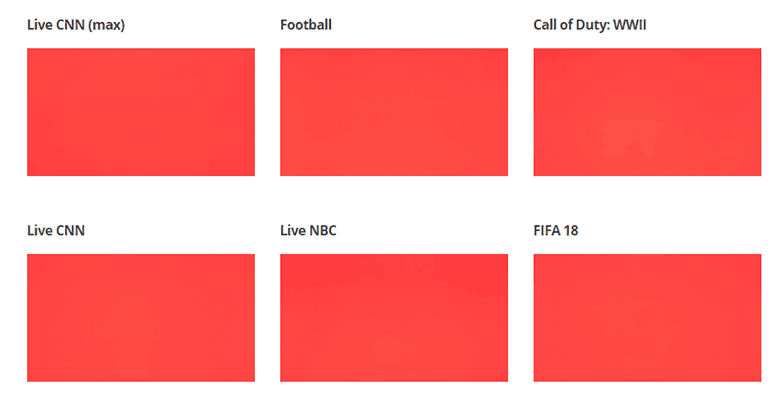Burnout OLED TVs in real tests

OLED degradation after 32 weeks of use. The photo of 100% red is compared on six new TVs and after 32 weeks of the test for accelerated aging with different types of content
. OLED technology is considered to be the next “revolutionary” change for television screens. These TVs are much brighter and offer better picture quality than LCD with LED backlighting, not to mention the best level of black. But marketers and salespeople in the store are unlikely to tell you about what they will encounter in actual operation of an OLED TV, namely, the inevitable burnout of the matrix, which will occur earlier than you thought.
RTINGS.com specialists conducted objective testingpicture quality on the LG OLED C7 TV, a typical representative of its class. The results are disappointing.
Testing was an “accelerated aging test”. It was bought six televisions, each of which runs a specific type of content:
- CNN news
- CNN news at maximum brightness
- NBC news
- American football
- FIFA 18 game
- Call of Duty: WWII game
Every two weeks on the site published another series of photos :
- 50% gray
- 100% red
- 100% green
- 100% blue
- 100% cyan
- 100% magenta
- 100% yellow
Such a compilation allows you to explore in as much detail as possible exactly how the display burns out.
Testing includes 20 hours of operation per day, with breaks between five-hour blocks and the launch of LG's Pixel Refresher's original Pixel Refresher after every session (i.e., four times a day). This playback mode was designed to simulate watching television for five hours a day.
Tests are still ongoing. The last published photos were taken 32 weeks after the start of testing, but already now there is a noticeable difference with the original image, which was on the new TVs.
At first glance it seems that the minimum difference in the image is on the fill in blue, and the burnout is most noticeable on 50% gray, on the fill in green and yellow.
During testing, it turned out that different types of content cause different degrees of burnout. Worst of all for TV games and news, when the screen is constantly displayed logos, maps or other elements of a stable form in certain places on the screen. In these areas, artifacts are most pronounced.
RTINGS specialists admit that test scripts are extreme. However, such five-hour “thematic sessions” seem to be a completely normal example of the actual use of television at home. Many consumers do turn on TV for a certain type of content and for five hours do not change it, be it a news channel or a computer game.
The recorded burnout rate does not match the manufacturer’s claims. LG claims that burnout will not be a problem for at least 30,000 hours of work, and here we see obvious problems, such as logos on the screen, after just 4,000 hours of work.
Judging by the test results, in order to extend the life of the OLED TV, it is desirable to vary the content that is displayed on the screen. The main enemy is the same logo or another element that is displayed in the same place on the screen. If you constantly watch one channel, then you can advise at least zoom. But of course, the best thing is to constantly change the content on the screen: play not one game, but different games, watch movies after / instead of news channels, avoid a lengthy demonstration of scrolling text and logos on the screen.
Naturally, LG is not the only company that is experiencing problems with burnout OLED-displays. The same problems with the burnout of the displays were observed in Google Pixel 2 XL smartphones when it came out last year.

Google solved the problem with a software update, after which the navigation bar automatically disappeared from the screen after a long period of inactivity. In addition, the maximum brightness level of the display is reduced. Although initially Google claimed that such a burnout was normal, but then it still extended the warranty period to two years.
